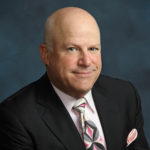How Plastic Surgeons Got Their Name
Plastic surgery is actually a term that is rooted in Greek. The Greek word “plastikos” refers to sculpting or modeling as art; like clay is malleable. Cosmetic surgery has been practiced for thousands of years, with the earliest known practice being in 800 BC in India. People used the flaps of the forehead to create new noses after the old ones were amputated or mutilated. The earliest forehead flaps to reconstruct noses were from the tertiary effects of syphilis. Syphilis can eat away the soft tissue of the nose leaving the midface distorted. A renaissance physician, Taglicozzi, is given credit for a nasal reconstruction with soft tissue rotation from the forehead skin to the nose.
India wasn’t the only ancient culture to partake in plastic surgery. Ancient Roman and Egyptian cultures had cosmetic surgeries that altered the appearance of the lips and ears. Like all the arts, the Renaissance created many advances in surgical reconstruction and medicine as well. Most progressive cultures had procedures that enhanced the skin quality aiming to slow down father time and preserve the beauty that is youth.
In the Western world, Plastic Surgery has its roots in the first and second world wars with the devasting facial injuries, limb mutilations, and horrendous burns sustained by the Allies and Axis forces alike. The American Board of Plastic Surgery has existed since 1937. It was in 1941 that the board was considered an important medical specialty for the first time. This time period occurred long before any actual plastic or industrial material was involved in plastic surgery. The phrase “plastic surgery” existed prior to plastic being used, and the two items never had any actual correlation!
About Plastic Surgery
Plastic surgery is a practice that covers both cosmetic, reconstructive surgical, and medical procedures. It refers to any surgery that helps a patient have their body restored, rejuvenated, and enhanced. Some procedures might help with physical symptoms, while others might simply help patients feel younger and more like themselves. Other procedures help restore ‘normalcy” after the devasting effects of aggressive cancers requiring excision and causing disfiguration. Craniofacial plastic surgery is surgery that is performed to reconstruct and restore “normal” appearing faces and bony cranial deformities such as the cleft palate and cleft lip surgery.
There are two types of plastic surgery: cosmetic and reconstructive.
Reconstructive surgery helps to reconstruct the body when it has been damaged. This is often the case for people who have been through bouts of trauma, whether it be traumatic accidents, suffered severe burns, or had wounds or scarring left behind after a battle with an infection, cancer, or war injury. In addition, this type of surgery can be used to correct genetic abnormalities like cleft palates and craniofacial deformities, breast and hand deformities. It is a field of surgery that is practiced all over the body. It is no wonder that we learn from a seven-book encyclopedia of Plastic Surgery!
In most cases, reconstructive surgery is a medical procedure done to help the body restore its prior function. Some people may have this done for purely aesthetic reasons, though.
With cosmetic surgery, a person’s appearance is enhanced aesthetically using surgery. There are several different reasons that someone might get cosmetic surgery, which include:
- Restoring a normal appearance, like with anti-aging
- Maintaining a normal appearance to stop aging
- Enhancing a normal appearance so it fits a person’s aesthetic
There is an extremely large range of procedures in the plastic surgery field since our scope of medical and cosmetic coverage is over the entire body! Some of the subtypes of surgery include breast augmentation, burn reconstruction, body contouring, pediatric plastic surgery, microsurgery, urogenital and craniofacial surgery. Actually it was a plastic surgeon who was the first doctor to successfully perform a kidney transplant.
The plastic surgery field has also made advancements in the reconstruction of the hands after accidents. Face transplants and hand transplants have also been successfully completed.
Because the field is so large, training to become a plastic surgeon takes time and dedication. Again, there are seven volumes of our core specialty. You want a well-trained and experienced Plastic Surgeon.
Schedule a Consultation
Dr. Berman is an experienced surgeon who practices at Berman Plastic Surgery & Spa in Boca Raton, Florida. With 30 years of private practice experience, he is a reliable source of information and encouragement. To find out about your plastic surgery options, schedule a consultation today.
Dr. Jonathan Ross Berman is a Boca Raton plastic surgeon who has been certified by both the American Board of Plastic Surgery and the American Board of Otolaryngology / Head and Neck Surgery with over 30 years of service experience specializing in Breast Augmentation, Rhinoplasty, Face Lift, Liposuction, and many other types of plastic surgery in Boca Raton, FL.















